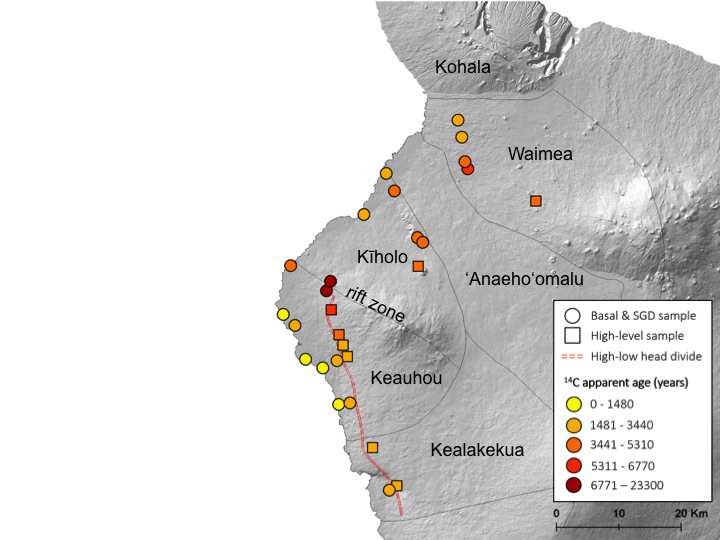
SPONSOR:
National Science Foundation – EPSCoR’s ‘Ike Wai
PROJECT PERIOD:
10/2017 – 05/2021
PROJECT PIs:
Gwen Jacobs, and Aly El-Kadi (Senior Researcher)
ABSTRACT:
Residents of Hawai‘i rely on groundwater as their primary source of freshwater, yet the Hawaiian aquifer systems are not well understood. The islands are characterized by highly heterogeneous basaltic lava that create a very complex hydrogeologic system. Additionally, the aquifers are often impounded by dike systems or intersected with massive layers or faults. All of these subsurface structures affect how groundwater is stored and how quickly it is able to move. The west side of Hawai‘i Island (further referred to as West Hawai‘i) has an unusual hydraulic head gradient, forming a high-elevation aquifer system that supplies the majority of the area’s freshwater demands. To better understand this hydrogeologic system, we employed a multi-tracer approach to determine the apparent groundwater ages. Radiocarbon was utilized to date older water in the aquifer system, while chlorofluorocarbons were utilized to date younger water recharged less than 50 years ago. By providing a better idea of which wells pump young versus old groundwater, we can estimate how long the water has been stored in the aquifer system and how quickly each aquifer system is replenished. With this information, we can improve our understanding of the sustainability of West Hawai‘i’s aquifer systems and better manage our groundwater resources.
PRINCIPAL INVESTIGATOR
